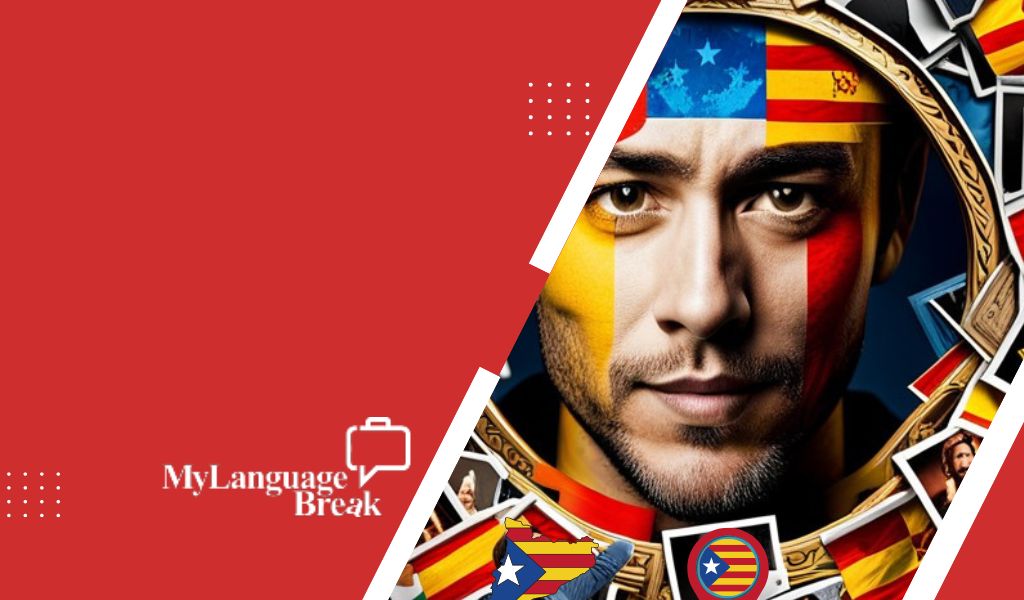Looking for a way to learn Catalan? Look no further! Catalunya is a beautiful region in northeastern Spain that is home to a rich culture and language. While Spanish is the predominant language spoken in Catalunya, Catalan is also widely used. We will discuss the best ways to learn Catalan and explore some of the amazing things that the region has to offer.
The Benefits of Learning Catalan
Spanish is a Romance language that is spoken by over 400 million people globally, making it the second most spoken language in the world. It is estimated that around 10 million of those speakers are from the Catalonia region of Spain, where Catalan is also an official language. Learning Catalan can provide students with a new perspective on Spanish culture and language, and can also open up new opportunities for travel and work. Fluent in 3 Months offers a method to learn the language in just 90 days, so it is possible for anyone to become proficient in this beautiful and fun-to-speak tongue.

Why Learn the Catalan Language
Catalan is spoken in a few different places, including Catalunya (northeastern Spain), the Balearic Islands, Alghero (in Sardinia, Italy), and Valencia, Spain. It’s also the national language of Andorra.
Catalan is pretty similar to Spanish, but there are a few key differences. For one, Catalan has a written language that differs somewhat from Spanish. There are also some pronunciation differences – for example, the letter “c” is pronounced like the letter “s” in Catalan, whereas it’s pronounced like the letter “k” in Spanish.
If you’re interested in learning Catalan, there are a few different ways to go about it. You can find classes offered in your local community, or you can take an online course. There are also plenty of resources available in both English and Spanish that can help you get started.
Catalan provides a great opportunity to explore the Pyrenees, which is full of climbing, trekking, paragliding, and skiing routes. Additionally, Catalan allows you to navigate the Mediterranean islands and beaches, lovely countryside, and vibrant cities. This language also enables you to fully appreciate many historic sites left over by the Greeks, Romans, and Moors. Consequently, Catalan opens up a wealth of possibilities for exploration and learning.
Catalans: A Culture of Delicious Cuisine and Festivals
Catalan culture is renowned for its art, architecture, food, and wine. Some of the most famous Catalans include artists Salvador Dalí and Joan Miró, cellist Pablo Casals, architect Antoni Gaudí, and chef Ferran Adrià.
The capital of Catalunya is Barcelona – a gorgeous, friendly, and culturally vibrant seaside city. It has great architecture, fabulous restaurants, and lively festivals, such as La Mercè, a city-wide party every September featuring free cultural and music events.
Catalans are known for their delicious Mediterranean cuisine. (Many say that in Spain their only rival in regional cuisine is the Basques). The recipes are simple; what makes them so outstanding are the tasty and fresh ingredients including delectable olive oil seafood tomato cheeses and charcuterie.
The wine And cava (Catalan sparkling wine) are also excellent – And very affordable This is a place you need to visit if you want to experience the best of Catalan culture!
The Catalan Language in a New Era
Catalonia is an autonomous community within Spain with its government. The Catalan language was banned under Spanish dictator Francisco Franco. Today, most people in Catalunya outside Barcelona speak exclusively Catalan.
Since democracy was restored in 1978, the Catalan language has seen a resurgence. This is due in part to the strong independence movement in Catalunya. In 2014, 90 percent of voters chose independence in a referendum. While this is a strong show of support, the voter turnout was only 43 percent. This may be because speaking purely Catalan and participating in Catalan cultural activities are seen as pro-independence actions by some people.
The Romance of Catalan
Catalan is not difficult to learn, especially for those who already speak another Romance language. Many people mistakenly think Catalan is a dialect of Spanish when it is quite different. Catalan has more in common with French than Spanish in terms of vocabulary, pronunciation, and grammar. Despite this, many people visit Catalunya expecting to practice their Spanish only to fall in love with the culture and lifestyle instead.
In Spanish, acabar means “to end” or “to finish”. In Catalan, it just means “to be”. This is because the Spanish word caminar doesn’t have a direct translation into Catalan. However, both languages share the word cantar, which means “to sing”. Finally, estar has multiple meanings in Spanish, depending on the context it is used in. In Catalan, its definition is more specific and it always means “to be”.

The Easiness of Catalan for Spanish Speakers
Catalan is a Romance language that shares many similarities with Spanish, making it an easy language for Spanish speakers to learn. Some of the shared features include similar grammar rules, a large number of cognates (words that are similar in both languages), and common vocabulary. There are also some key differences between the two languages, such as pronunciation and a few unique letters and sounds found in Catalan. Overall, Catalan is an interesting and easy language to learn for Spanish speakers.
The Spanish and Catalans both roll their “R’s”. This is a difficult task for many English speakers, but it is a skill that can be learned. The key is to relax your tongue and allow the air to escape slowly. When you pronounce the letter “R” in Spanish or Catalan, it should sound like you are gargling water.
The letter “V” is pronounced as the letter “B” in Catalan, as in Spanish. This can cause some confusion for English speakers, as the sound of the letter “B” is different in English. However, with a little practice, the pronunciation of “V” and “B” in Catalan will become second nature.
The letter “Ñ” is not used in Catalan – instead, the sound is spelled out phonetically as “NYA”. This can be seen in words like Catalunya (Catalonia) and acompanyar (to accompany). Overall, the Catalan language is very similar to Spanish, with only a few minor differences.
How to Pronounce Catalan
Catalan pronunciation is similar to Spanish in some ways. For example, both languages use the letter “v” to make the sound of a “b”. However, there are also unique letters and sounds found in Catalan. For example, the letter “x” makes the sound of a “sh”, and the letter “ç” makes the sound of a “s”.
The Catalan way of pronouncing “X” is as a “CH”, as in the word “chai”. This pronunciation can be heard in words such as xocolata (chocolate), Xile (Chile), and Xina (China).
The Catalan way of pronouncing “X” is unique, and it’s something that you’ll likely only hear in this region of Spain. If you’re ever in Barcelona or another Catalan city, make sure to listen for this sound, as it’s a distinguishing characteristic of the language.
The “ch” sound is common in Catalan, and the letter “g” can also make this sound. An example of a word with this sound is Puig, which is pronounced “poot-CH”. Another common word with this sound is vaig, which means “I go” and is pronounced like “baa-CH”.
The cedilla is used to indicate the sound of “S” in the Catalan language. It appears as a small “tail” under the letter “C”. The cedilla does not occur very often in Catalan, but it is used in words such as començar (to begin) and esforç (effort).
The sound of the letter “LL” in Catalan is difficult for foreigners to learn. In Spanish, the sound of “LL” is similar to saying “ya”. However, in Catalan, the sound is more like saying “yeuh”. To make the correct sound of “LL”, you must flatten your tongue and push it against the back of your top teeth.
When learning how to say the “NY” sound in English, it can be difficult for visual learners who see “NY” at the end of a word and want to pronounce it “nee”. The sound is similar to a Spanish “Ñ”, which is always accompanied by a vowel afterward. To say the sound without the vowel, try saying “bany” in Catalan, which also means “bath”.

Catalan Courses for English Speakers
The Generalitat de Catalunya’s Parla.Cat website offers free online Catalan courses, with the option of hiring a tutor for an additional fee. The website’s design and functionality may be dated, but the materials and lesson plans are excellent. If your native language is English, you can use Duolingo to learn Catalan by translating Spanish to Catalan and vice versa.
The Consorci per a la Normalització Lingüística offers low-cost, in-person classes for learning the Catalan language. These classes are available in most medium-sized or larger towns in Catalunya. A course generally lasts three months, meets twice a week for two and a half hours, and costs under €15 for the entire semester.
Learning Catalan can be a great way to connect with the culture and people of Catalunya. The classes offered by the Consorci per a la Normalització Lingüística are an affordable and convenient way to learn the language.
Conclusion
In Catalunya, many people are willing to help foreigners learn Catalan. This is a great opportunity to learn the language, as people in the region are very friendly and happy to teach. This is a great way to improve your Catalan skills, and it’s a lot of fun too!

